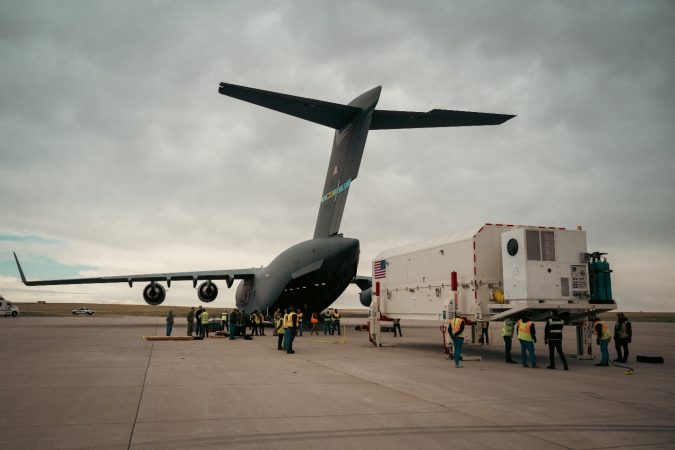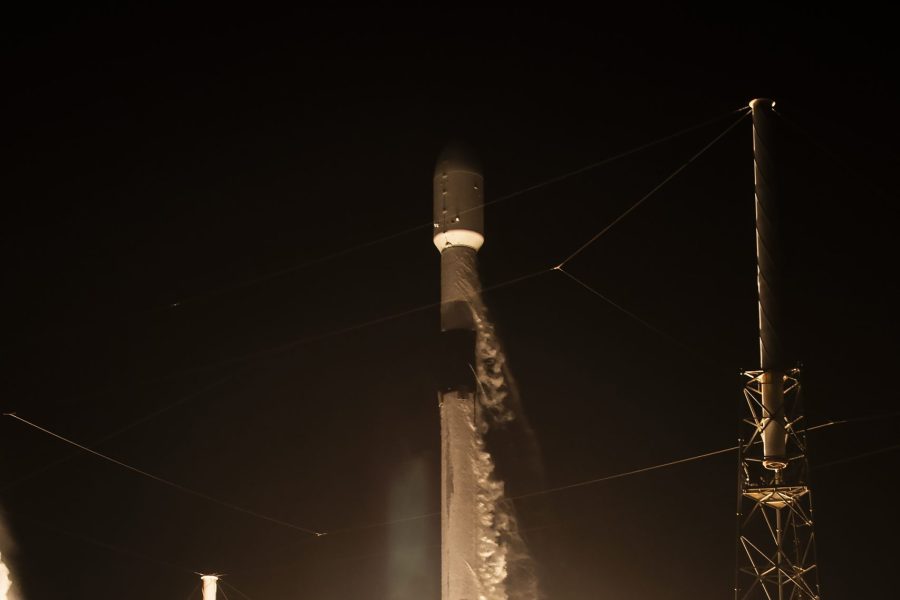The Space Force has launched its latest GPS satellite in record time from preparation to liftoff, as part of its ongoing effort to improve navigation for troops and the public and create a more flexible launch schedule.
GPS III Space Vehicle-08 lifted off aboard a SpaceX Falcon 9 rocket from Cape Canaveral Space Force Station, Fla., on May 30. From initial planning through receiving the satellite from Lockheed Martin and transporting it via the Air Force’s C-17 cargo plane to Florida for launch, the entire process took the Space Force about three months, marking the service’s fastest turnaround for a GPS satellite launch to date. Previous GPS missions have typically taken up to two years from start to finish.
“Today’s launch showed our ability to respond to an operational need, such as an on-orbit vehicle failure within the GPS constellation,” Col. Andrew Menschner, Mission Delta 31 commander, said in a statement emailed to Air & Space Forces Magazine. Mission Delta 31 is currently overseeing GPS III Space Vehicle-07, which launched in December.

The operation builds on another successful satellite launch in December that completed the mission within five months. Guardians are working to accelerate the turnaround time for national-security launches to reach a broader goal of “tactically responsive space”—the ability to place a new satellite in orbit quickly in response to a crisis.
“It highlights another instance of the Space Force’s ability to complete high-priority launches on a rapid timescale, which demonstrates the capability to respond to emergent constellation needs as rapidly as Space Vehicle readiness allows,” Col. Jim Horne, senior materiel leader of Launch Execution for Assured Access to Space, said in a release.
Space Systems Command originally picked the United Launch Alliance to handle the GPS III Space Vehicle-07 and -08 missions, but ULA’s new Vulcan rocket was still awaiting certification for use in military launches by the time the satellites were ready. The rocket was certified in March, but delays and a backlog have hampered ULA’s ability to meet military launch demands.
Space Force leaders, concerned about the security of American military satellites on orbit, instead chose to carry both missions on SpaceX rockets to accelerate deployment of anti-jamming capabilities and get critical navigation assets into orbit as swiftly as possible. In doing so, they shifted later GPS missions— the ninth and 10th GPS III satellites—to fly on Vulcan rockets instead. The next GPS III launch is expected at the end of this year.
“It highlights our ability to rapidly deploy an additional M-Code-capable satellite and continues to push the boundaries of traditional launch timelines,” added Menschner. “With 31 active vehicles, seven on orbit in reserve status, and two GPS III vehicles completed and ready for launch, the constellation is healthy and ready to support the six billion people around the world who use our capabilities every day.”
This is the eighth GPS III satellite crafted by Lockheed, equipped with advanced M-Code technology that makes its signals significantly tougher to hack or jam. While earlier GPS models could broadcast M-Code, the GPS III series fully unlocks its potential by precisely targeting signals to specific regions. The Space Force touts it as delivering signals “three times more accurate and eight times more resistant to interference.” GPS III satellites are also equipped with a new L1C signal that is compatible with other global navigation satellite systems to enhance connectivity for civilian users.
The Space Force officials have stressed the need to launch more of these satellites to make more GPS capability available to the military alone. To support that effort, the service expanded its investment with Lockheed earlier this week by ordering two additional GPS III Follow-On satellites under a new $509.8 million contract modification. This latest order brings the total value of the company’s GPS III contract to more than $4.1 billion for a total of 22 satellites. The two new satellites—designated Space Vehicles 21 and 22—are scheduled for delivery by November 2031.


